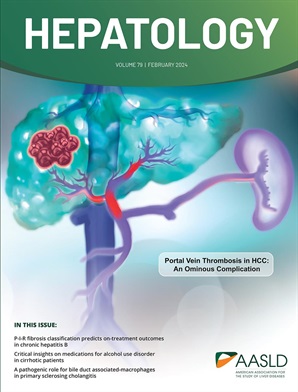模拟基于生存福利的肝移植器官分配的影响
IF 12.9
1区 医学
Q1 GASTROENTEROLOGY & HEPATOLOGY
引用次数: 0
摘要
背景,目的:在美国和世界大部分地区,根据MELD评分分配器官,优先考虑死者供体肝脏移植的病情。有人呼吁根据移植生存效益来分配器官,但这种系统对更广泛的等待名单人口的影响尚不清楚。的方法,结果:我们使用肝脏模拟分配模型(LSAM)进行了一项模拟研究,比较了美国目前的肝脏分配系统,使用不同的时间范围,重点关注:移植前生存、移植后生存和生存效益(移植后生存和移植前生存的差异)。模拟将肝脏分配改为基于生存获益的系统,可导致患者平均移植后生存率的小幅改善(5年平均生存率为4.24年,而当前系统为4.19年)。然而,这一微小的改善与模拟的移植减少和每年400例等待死亡人数的增加有关。在基于生存效益的分配方法下,由此产生的总体净效益(移植前死亡和移植后生存)可以忽略不计。结论:我们的模拟预测,基于生存效益的分配只会使每个受者的移植后生存时间平均增加18天,而代价是模拟候补名单死亡率每年增加400例死亡。目前的肝移植实践中,在移植医生分配器官以最大化结果的系统中,疾病优先分配的操作,总体上维持了生存效益,而不是损害。本文章由计算机程序翻译,如有差异,请以英文原文为准。
Simulating the impact of survival benefit-based liver transplant organ allocation
Background & Aims: In the US, and much of the world, prioritization for a deceased donor liver transplant focuses on sickest-first based on allocating organs using the MELD score. There have been calls to instead allocate organs based on transplant survival benefit, but the impact of such a system on the broader waitlist population is unknown. Approach & Results: We performed a simulation study using the Liver Simulated Allocation Model (LSAM) to compare the current US system of liver allocation to one, using different time horizons, focused on: pre-transplant survival only, post-transplant survival only, and survival benefit (difference of post-transplant survival and pre-transplant survival). Changing liver allocation to a survival benefit-based system was simulated to lead to a small improvement in average patient-level post-transplant survival (mean survival over 5-year time horizon of 4.24 y vs. 4.19 y in current system). However, this small improvement was associated with a simulated decrease in transplants and an increase in waitlist mortality of 400 deaths per year. The resulting net benefit overall (pre-transplant deaths and post-transplant survival) was negligible under a survival benefit-based allocation approach. Conclusions: Our simulations predicted that survival benefit-based allocation would only increase post-transplant survival by an average of 18 days per recipient, at the expense of a simulated increase in waitlist mortality of 400 deaths per year. The current practice of liver transplantation, with sickest-first allocation operating in a system where transplant physicians ration organs to maximize outcomes, survival benefit overall is maintained and not compromised.
求助全文
通过发布文献求助,成功后即可免费获取论文全文。
去求助
来源期刊

Hepatology
医学-胃肠肝病学
CiteScore
27.50
自引率
3.70%
发文量
609
审稿时长
1 months
期刊介绍:
HEPATOLOGY is recognized as the leading publication in the field of liver disease. It features original, peer-reviewed articles covering various aspects of liver structure, function, and disease. The journal's distinguished Editorial Board carefully selects the best articles each month, focusing on topics including immunology, chronic hepatitis, viral hepatitis, cirrhosis, genetic and metabolic liver diseases, liver cancer, and drug metabolism.
 求助内容:
求助内容: 应助结果提醒方式:
应助结果提醒方式:


